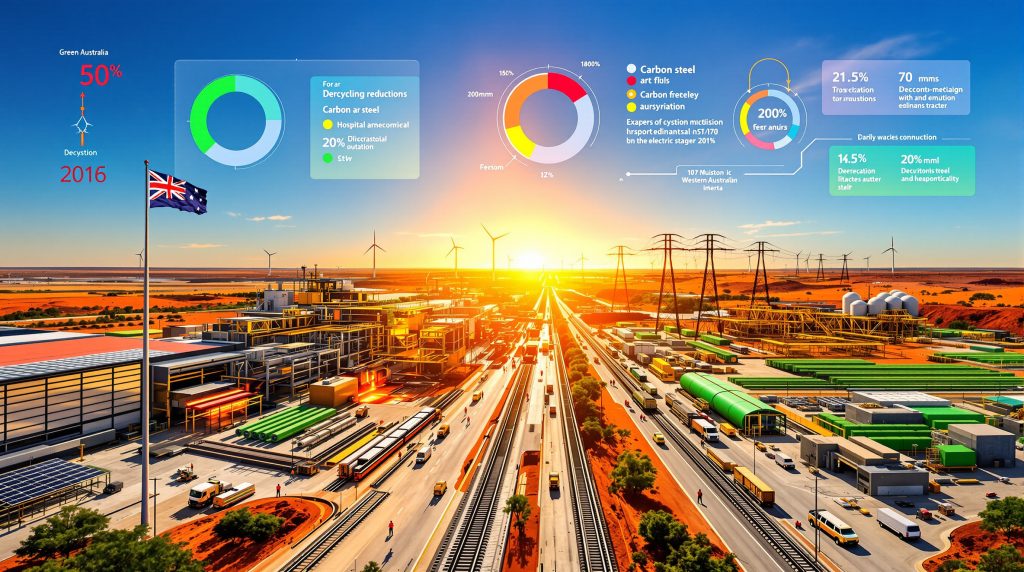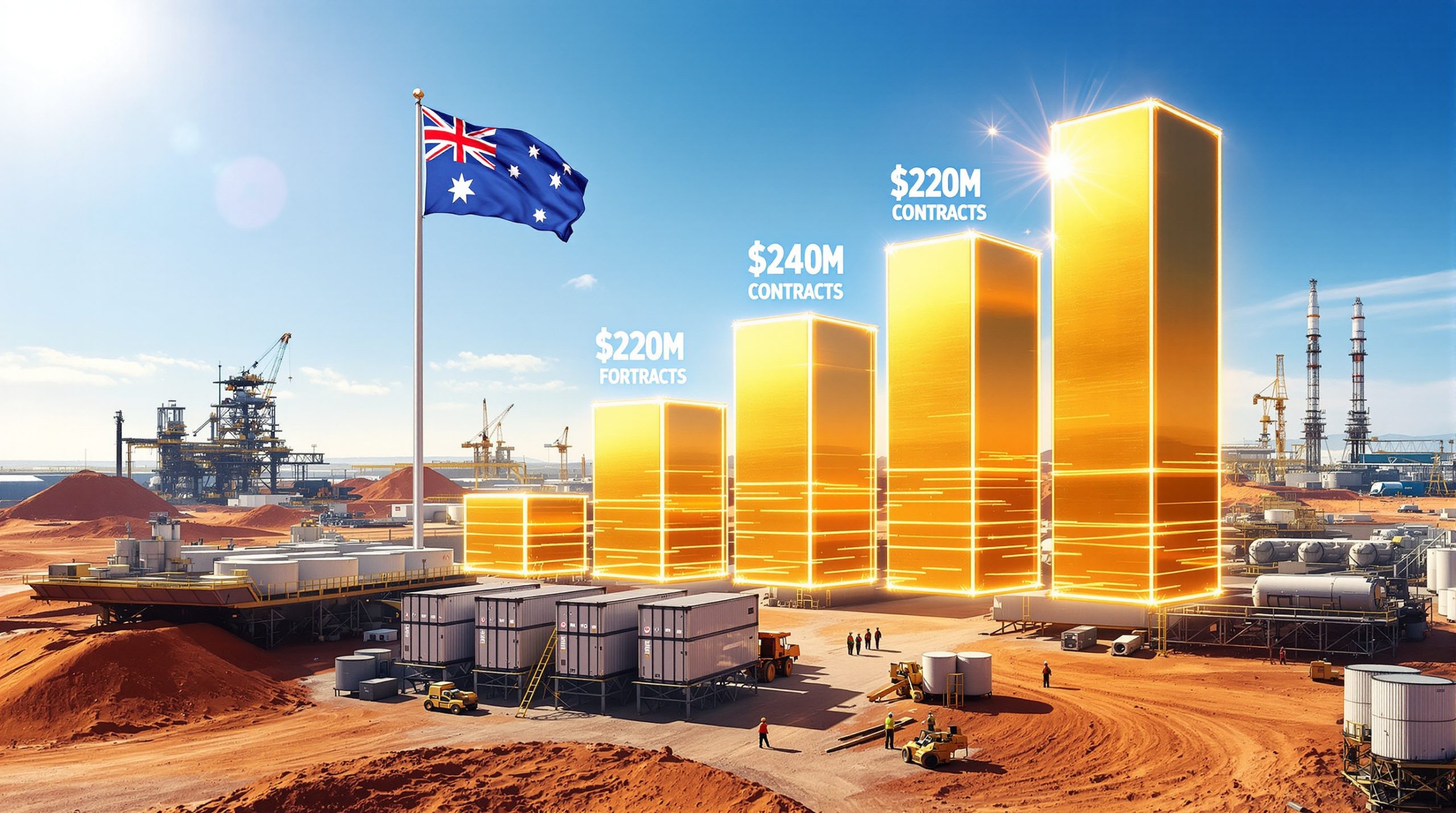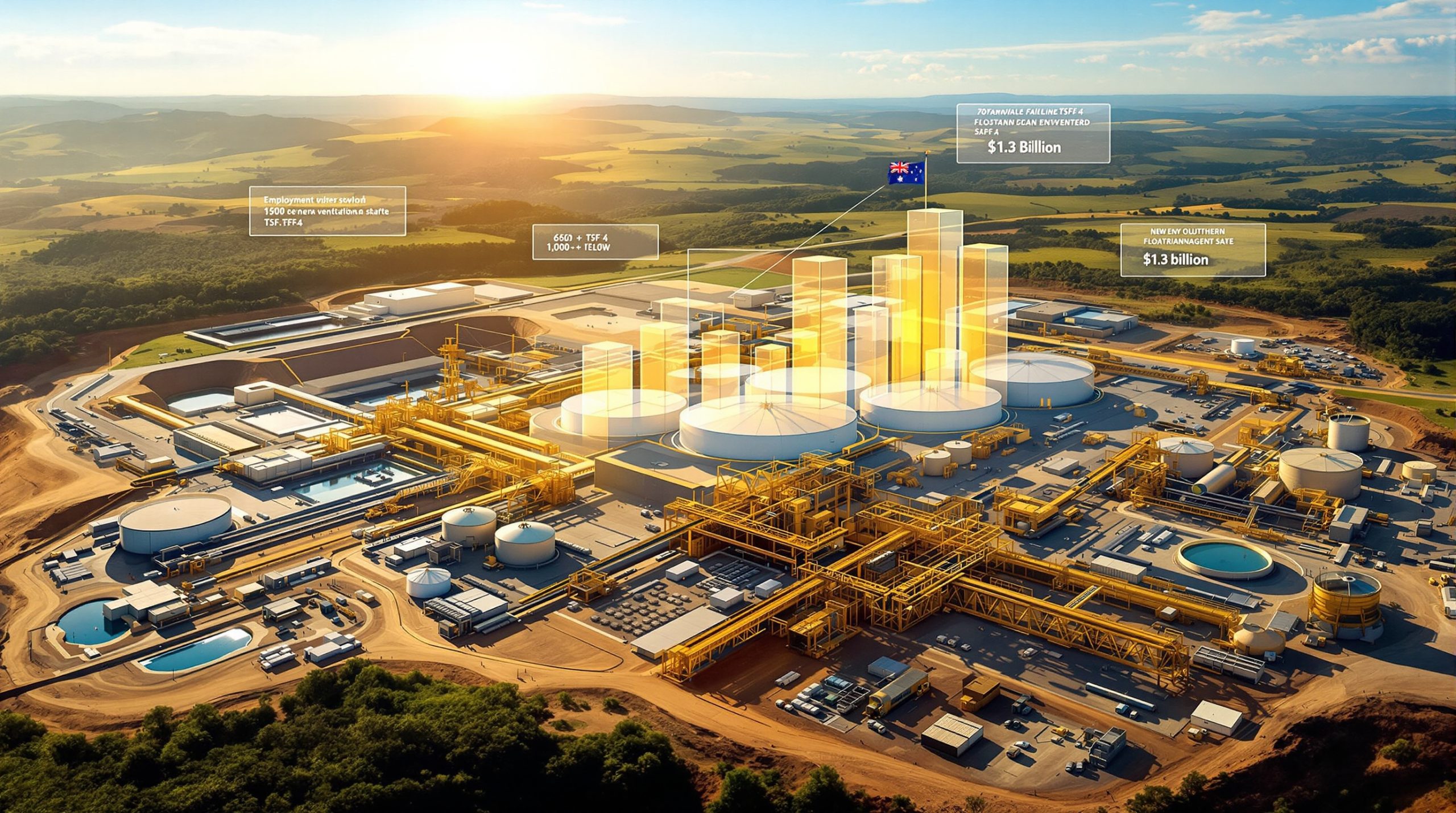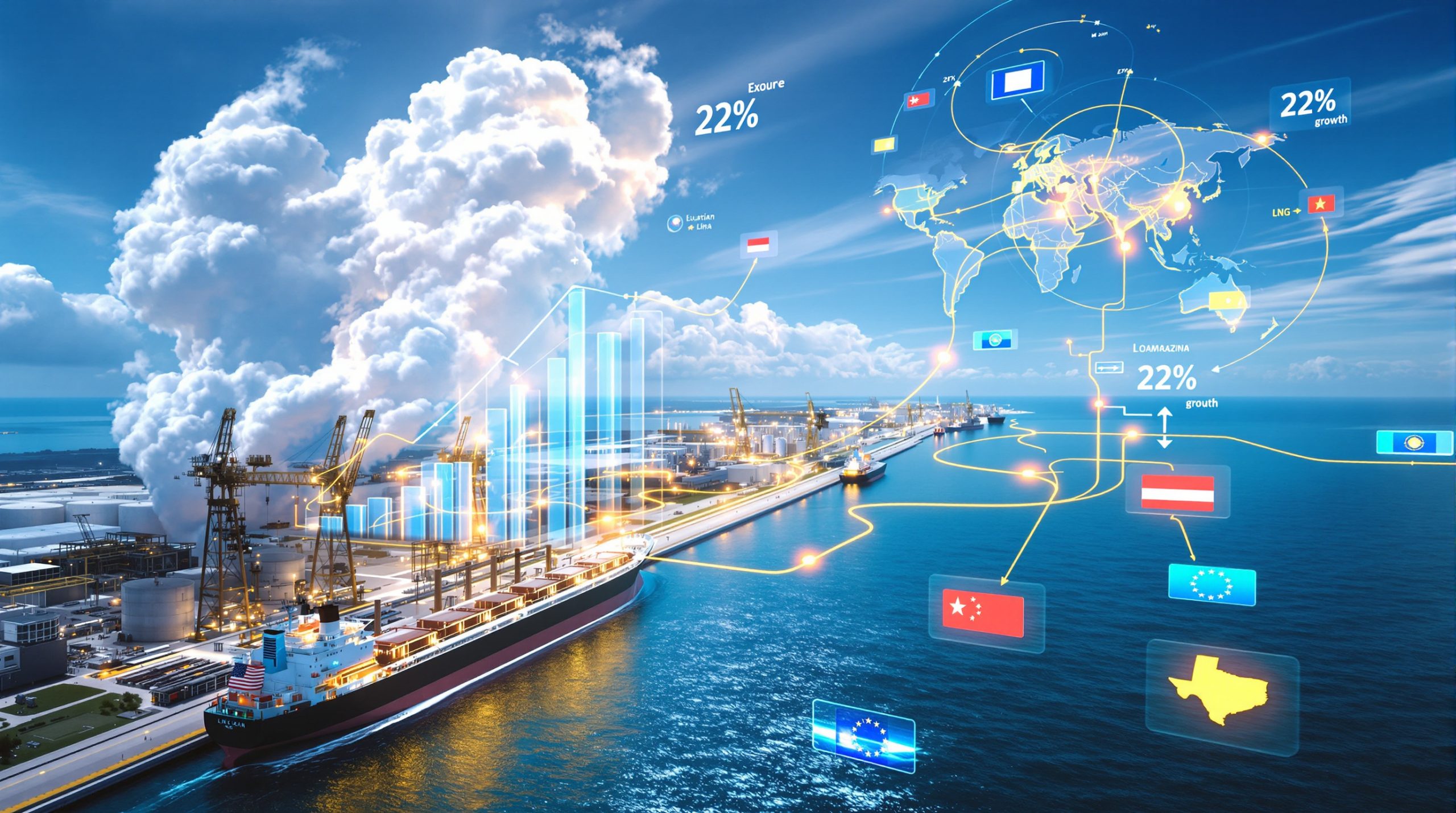Understanding WA's Strategic Green Steel Initiative
Western Australia has positioned itself at the forefront of sustainable manufacturing through comprehensive government procurement reforms targeting locally-produced green steel. This transformation represents more than environmental compliance—it establishes a foundation for industrial diversification while leveraging the state's abundant iron ore reserves and renewable energy capacity.
The WA government prioritises locally made green steel through strategic procurement initiatives that create market demand for domestic manufacturing while supporting decarbonisation objectives. Furthermore, Premier Roger Cook articulated the dual-benefit approach, stating that the initiative aims to decarbonise while creating jobs to kick off a whole new industry for WA by using the power of government procurement. These efforts align with broader mining decarbonisation benefits that create economic value alongside environmental improvements.
Government Procurement Framework Changes
The Cook Labor Government's Made in WA strategy introduces explicit preferences for locally-manufactured green steel across major infrastructure developments. This procurement approach requires detailed value-for-money assessments that incorporate environmental impact calculations and local economic benefits beyond traditional cost considerations.
The WA Government's priority on locally made green steel demonstrates comprehensive policy commitment through strategic procurement reforms. In addition, the WAIPS (WA Industry Participation Strategy) addendum for steel introduces stronger expectations for local sourcing while recognising the role of recycled and low-emissions steel products.
This framework applies enhanced assessment criteria that evaluate:
- Environmental impact calculations: Comprehensive lifecycle carbon footprint analysis
- Local economic benefits: Job creation measurement and skills development tracking
- Supply chain resilience: Reduced import dependency evaluation
- Long-term cost considerations: Maintenance and operational lifecycle analysis
Infrastructure Applications and Project Scope
Government green steel requirements extend across multiple sectors with explicit focus on health, transport, and clean energy infrastructure. Minister Amber-Jade Sanderson (Energy and Decarbonisation and Manufacturing) emphasised the comprehensive scope, noting that green steel products will shape WA projects from hospitals and transport to housing and energy infrastructure.
Key Application Sectors:
- Railway infrastructure and rolling stock components
- Road construction materials and structural elements
- Electrical transmission line infrastructure
- Healthcare facility construction projects
- Housing development initiatives
- Clean energy infrastructure components
The initiative leverages decommissioned mining infrastructure and retired offshore oil and gas equipment as primary feedstock sources. Consequently, this creates circular economy benefits while addressing industrial waste management solutions requirements across multiple sectors.
Technology and Production Methods in WA Green Steel
Green steel manufacturing employs electric arc furnace technology powered by renewable energy sources, fundamentally altering the carbon footprint of steel production. This process utilises recycled steel feedstock, including decommissioned mining equipment and offshore oil and gas infrastructure, creating closed-loop resource utilisation.
Electric Arc Furnace Innovation
The Green Steel of WA project in Collie demonstrates this technology through significant government investment and commercial targeting. The facility received $2.7 million in development grants from the WA government and targets commercial operations by 2027.
Electric arc furnaces operate through electrical resistance heating to melt recycled steel scrap, eliminating the coal and coke combustion requirements of traditional blast furnaces. When powered by renewable energy solutions, this technology achieves substantially lower lifecycle carbon emissions compared to conventional steel production methods.
Key Technical Specifications:
- Renewable energy integration: 100% clean electricity powering production
- Scrap steel recycling: Converting local industrial waste into construction-grade materials
- Production capacity: Targeting commercial operations by 2027
- Government investment: $2.7 million in development grants allocated
Feedstock Sources and Supply Chain
Local green steel production draws materials from diverse waste streams that address both manufacturing requirements and environmental remediation objectives. However, the initiative specifically targets waste from WA's primary industries, creating synergistic benefits between waste management and manufacturing.
Primary Feedstock Sources:
- Decommissioned mining infrastructure and equipment
- Retired offshore oil and gas platform components
- Construction and demolition waste streams
- Industrial manufacturing byproducts and scrap materials
This approach serves dual objectives: establishing reliable scrap steel supply for manufacturing while managing industrial waste remediation obligations from legacy operations. For instance, this connects with broader mine reclamation innovations that transform former industrial sites into productive assets.
Job Creation and Industrial Diversification Impact
The green steel initiative creates employment opportunities across multiple skill levels while establishing new manufacturing capabilities within Western Australia's economic framework. The government explicitly targets apprenticeship and training program establishment to support workforce development requirements.
Employment Generation Across Sectors
Employment Opportunities by Sector:
| Sector | Job Types | Skill Level | Growth Potential |
|---|---|---|---|
| Manufacturing | Furnace operators, quality control | Technical/Trade | High |
| Fabrication | Welders, structural engineers | Skilled trades | Medium-High |
| Logistics | Transport, warehouse management | Mixed | Medium |
| Research & Development | Materials scientists, engineers | Professional | High |
| Project Management | Construction supervisors, planners | Professional | Medium |
Economic Diversification Strategy
The initiative explicitly aims to reduce WA's dependency on raw material exports by establishing value-added processing capabilities. Government procurement guarantees create demand certainty, encouraging private investment in manufacturing facilities and supporting trades employment development.
Diversification Benefits:
- Adding value to iron ore before export through processing
- Creating downstream processing capabilities for resource utilisation
- Establishing recycling industry foundations and supporting infrastructure
- Generating apprenticeship and training programs for skills development
Minister Amber-Jade Sanderson emphasised the employment diversity potential, noting that the initiative will create jobs, diversify the economy and provide green steel products for projects that will shape WA across multiple infrastructure categories. These developments align with evolving mining industry trends that emphasise sustainable manufacturing integration.
Priority Infrastructure Developments
Government procurement preferences ensure green steel integration across major public works, with healthcare, transport, and energy infrastructure receiving initial implementation focus. This strategic approach targets sectors with substantial steel requirements and long asset lifecycles.
Healthcare Infrastructure Projects
Hospital construction projects represent significant green steel demand opportunities through structural framework requirements and specialised medical facility components. Healthcare facilities require extended operational timelines (50+ years) with consistent regulatory emphasis on sustainability certification and public sector procurement accountability.
Healthcare Applications Include:
- Structural framework and building systems
- Specialised medical facility components and equipment supports
- Long-term durability specifications for extended facility lifecycles
- Sustainability certification compliance for public health facilities
Transport Infrastructure Applications
Railway and road projects offer substantial green steel utilisation opportunities with visible public impact, supporting government communication objectives regarding economic development and sustainability achievements.
Transport Sector Applications:
- Rail track components and support structures
- Bridge construction materials and reinforcement systems
- Highway guardrails and safety barrier installations
- Public transport facility construction and infrastructure
The government's expression of interest process specifically targets local manufacturers capable of supplying major government projects across these priority infrastructure sectors.
Policy Framework and Implementation Requirements
The WA Industry Participation Strategy (WAIPS) addendum for steel introduces enhanced local sourcing expectations while recognising recycled and low-emissions steel products within government procurement processes. This policy evolution recognises that lowest-cost procurement may not serve long-term government or community interests.
Value-for-Money Assessment Integration
Government procurement evaluations now incorporate comprehensive sustainability metrics alongside traditional cost considerations. The enhanced assessment framework explicitly measures multiple value categories:
Assessment Framework Components:
- Environmental Value: Carbon footprint reduction quantified across product lifecycle
- Economic Value: Local employment creation, skills development, and economic multiplier effects
- Strategic Value: Supply chain resilience measurement and reduced import dependency
- Social Value: Community benefit assessment and local capability development
Industry Development Support Mechanisms
The WAIPS addendum explicitly recognises recycled and low-emissions steel products within procurement criteria, creating market demand for secondary steel processing industries. This recognition supports circular economy development while encouraging technological innovation in sustainable manufacturing processes.
The WA government's commitment demonstrates that decarbonisation and industrial strength go hand in hand, creating opportunities that do not require choosing between clean energy and jobs through the Made in WA plan and clean energy transition strategy.
Market Confidence and Investment Attraction
Government procurement guarantees provide investment certainty for green steel manufacturers, encouraging private sector participation in facility development and technology deployment. This demand visibility reduces investment risk by establishing contracted revenue streams for potential manufacturers.
Production Capacity Requirements
The expression of interest process targets manufacturers capable of supplying government project requirements across multiple infrastructure categories. Market analysis indicates substantial demand across various product categories:
Production Requirements:
- Rebar production: Construction industry requirements for reinforcement applications
- Structural steel: Infrastructure project specifications for buildings and transport
- Specialised components: Energy sector applications and custom fabrication needs
- Export potential: International green steel markets and certification requirements
Technology Transfer and Innovation Opportunities
The initiative creates investment opportunities across multiple technology and infrastructure categories, encouraging both domestic and international technology partners to establish Australian operations.
Investment Categories:
- Electric arc furnace technology deployment and installation
- Renewable energy integration systems and power supply agreements
- Recycling and processing equipment for feedstock preparation
- Research and development partnerships with educational institutions
Government procurement preferences provide demand certainty that enables capital financing approvals and technology partner agreements by establishing predictable revenue streams.
Decarbonisation and Sustainability Metrics
Green steel manufacturing significantly reduces carbon emissions compared to traditional blast furnace production while supporting Western Australia's renewable energy transition objectives. Electric arc furnace technology powered by renewable electricity fundamentally reduces steel production's carbon footprint.
Emission Reduction Potential
Traditional blast furnace steel production relies on coal and coke combustion, creating substantial carbon emissions throughout the manufacturing process. Electric arc furnace technology eliminates these fossil fuel requirements when powered by renewable energy sources.
Carbon Footprint Comparison Framework:
| Production Method | Energy Source | Recycling Capability | Emissions Profile |
|---|---|---|---|
| Traditional Blast Furnace | Coal/Coke | Limited recycling | High carbon intensity |
| Electric Arc Furnace (Grid) | Mixed Grid | Moderate recycling | Medium carbon intensity |
| Green Steel (Renewable) | 100% Renewable | Maximum recycling | Low carbon intensity |
Note: Specific emissions figures require verification from peer-reviewed lifecycle assessment studies or industry standards bodies before publication.
Circular Economy Integration
Green steel production supports circular economy principles through comprehensive waste stream utilisation and resource efficiency optimisation. The initiative simultaneously addresses environmental remediation obligations and manufacturing feedstock requirements.
Circular Economy Benefits:
- Maximum recycled content utilisation from industrial waste streams
- Waste stream diversion from landfills through productive reuse
- Extended product lifecycle management for infrastructure applications
- Resource efficiency optimisation across manufacturing and construction sectors
The integration of decommissioned mining infrastructure and offshore oil and gas equipment creates synergistic benefits between waste management and manufacturing requirements.
Implementation Barriers and Solutions
Despite government support, green steel development encounters technical, financial, and logistical challenges requiring coordinated industry and government responses. These barriers must be addressed to achieve commercial viability and scale.
Technical Infrastructure Requirements
Green steel manufacturing requires substantial infrastructure development to support renewable energy integration and production scaling. Key development needs include comprehensive technical capability establishment.
Infrastructure Development Priorities:
- Electrical grid capacity: Renewable energy supply scaling and distribution systems
- Transportation networks: Raw material and finished product logistics optimisation
- Skilled workforce: Training and certification programs for specialised technical roles
- Quality assurance: Testing and certification facilities for product standards compliance
Market Competition and Positioning
Green steel manufacturers face competitive pressures from established traditional steel markets and emerging international green steel producers. Success requires strategic positioning and cost competitiveness.
Competitive Factors:
- International green steel pricing and market competition dynamics
- Traditional steel market competition and established supply relationships
- Technology adoption costs and capital investment requirements
- Certification and standards compliance for quality assurance
Government procurement preferences partially address these competitive challenges by providing guaranteed demand and volume commitments for local manufacturers.
International Context and Competitive Advantages
Western Australia's green steel initiative aligns with global decarbonisation trends while leveraging unique regional advantages in renewable energy and iron ore resources. This positioning enables competitive participation in emerging international green steel markets.
Global Green Steel Market Development
International demand for low-carbon steel products continues expanding as industries implement carbon accounting requirements and sustainability certification standards. Australia's resource advantages position the nation competitively within this growing market.
Research from the World Wildlife Fund highlights Australia's potential to become a global green iron leader, emphasising the nation's strategic advantages in renewable resources. Green steel production globally represents a significant market opportunity, with Australia positioned to capture substantial market share through integrated renewable energy and iron ore processing capabilities.
WA Competitive Advantages
Regional strengths supporting green steel development create comprehensive advantages across the entire production value chain from raw materials through finished products. The WA government prioritises locally made green steel to capitalise on these strategic assets.
Strategic Advantages:
- Abundant iron ore reserves: Access to world's largest iron ore deposits for feedstock
- Renewable energy potential: Substantial solar and wind resource availability for clean electricity
- Established mining infrastructure: Existing logistics and processing capabilities for efficiency
- Government policy support: Procurement preferences and development incentives for market certainty
These combined advantages enable WA manufacturers to compete effectively in both domestic and international green steel markets while supporting local economic development objectives.
Development Phases and Implementation Timeline
Green steel industry establishment follows structured phases from initial expression of interest evaluation through full commercial production. Government procurement providing essential demand certainty throughout development ensures sustainable growth.
Short-term Objectives (2025-2027)
Immediate development priorities focus on establishing foundational capabilities and initial production capacity. The Green Steel of WA Collie facility represents the primary near-term development with government investment support.
Immediate Priorities:
- Expression of interest evaluation and manufacturer selection processes
- Green Steel of WA Collie facility completion and commissioning by 2027
- Initial government project green steel integration and demonstration projects
- Workforce training program establishment and apprenticeship development
The $2.7 million government investment in the Collie facility demonstrates commitment to supporting this development timeline.
Medium-term Expansion (2027-2030)
Industry growth targets encompass expanded production capacity and market development beyond initial government procurement requirements. This phase focuses on commercial viability and export market development.
Growth Objectives:
- Additional production facility development and capacity expansion
- Export market establishment and international certification achievement
- Technology advancement and efficiency improvements across production processes
- Supply chain optimisation and integration with broader manufacturing sectors
The expression of interest process establishes the foundation for this expansion by identifying capable manufacturers and creating market confidence for private investment. Furthermore, this timeline aligns with broader expectations that the WA government prioritises locally made green steel through sustained policy commitment and procurement preferences.
Disclaimer: This analysis includes forward-looking projections and industry development timelines that involve inherent uncertainties. Investment decisions should consider multiple factors including market conditions, regulatory changes, and technological developments. Carbon emission figures and environmental benefits require verification from certified lifecycle assessment studies before implementation in procurement decisions.
Further information about Western Australia's green steel initiatives and sustainable manufacturing developments can be explored through industry publications and government resources that provide additional perspectives on resource sector transformation.
Ready to Capitalise on Australia's Green Steel Revolution?
Discovery Alert's proprietary Discovery IQ model delivers real-time alerts on significant ASX mineral discoveries, instantly identifying companies positioned to benefit from WA's green steel initiatives and infrastructure spending boom. Begin your 30-day free trial today and secure your market-leading advantage in this rapidly evolving sector.




